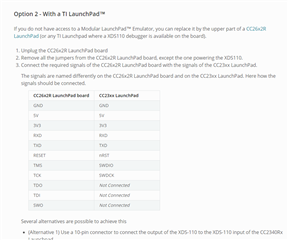Other Parts Discussed in Thread: CC3301, LP-XDS110ET, LP-EM-CC2340R5, CC2340R5, LP-XDS110
HI,
My Project Requirements:
- MCU + WiFi + BLE
- GSM integration via UART (point-to-point communication)
- MQTT communication (Azure IoT Hub as a cloud platform - Azure plug-in recommended)
- Sensors:
1) Two Modbus (max485) - 2 UART
2) External RTC - I2C
3) ADC sensors - ADC channels
4) SD card - SPI
5) Display - I2C
6) GPIO expander MCP2017 - I2C
Our current project, based on ESP32, meets all the specified requirements. However, our client has requested a migration from ESP32 to TI. Consequently, we have initiated the project using the cc3220MODASF launchpad (SimpleLink_c32xx_sdk_4_10_00_07 and Azure_cc32xx_4_10_01_01). Presently, we are facing challenges in integrating BLE and GSM functionalities. For BLE integration, an additional BLE MCU/transceiver is necessary (TI e2e recommends cc3301 companion IC), while for GSM integration, no sample code is available. Moreover, it entails developing a third-party TCP/IP library (LWIP).
Question:
Can we proceed with the CC3220MODASDF MCU to fulfill all our project requirements? If not, could you recommend an MCU that can meet these requirements, and can I port my CC3220 code to that IC? If the CC3220 is sufficient, could you suggest a better hardware design to integrate BLE and GSM functionality?




